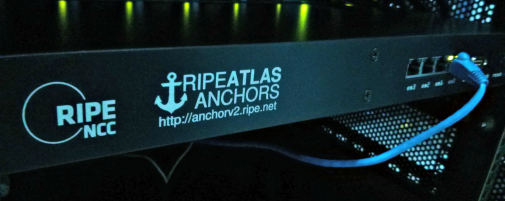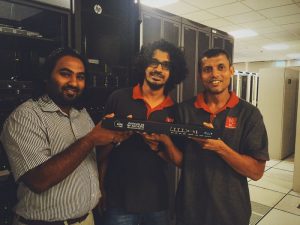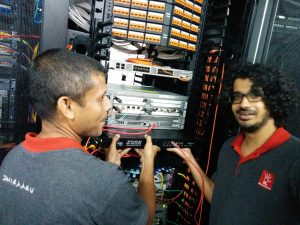
Dhiraagu, the Maldives’ first and largest telecommunication service provider, has been chosen to host the seventh APNIC sponsored RIPE Atlas Anchor.
The Maldives is one of the most remote nations on earth, comprising of over 1,000 islands spotted seven hundred kilometers south-west of Sri Lanka in the Indian Ocean, of which 200 are inhabited. Being such a remote place, the need to feel connected to each other and to the outside world is important for the 300,000 population.
 Dhiraagu, based on the Maldives largest island Male, has the largest 3G / 4G LTE Network in the Maldives providing mobile broadband connectivity to over 96% of the population.
Dhiraagu, based on the Maldives largest island Male, has the largest 3G / 4G LTE Network in the Maldives providing mobile broadband connectivity to over 96% of the population.
Ahmed Hussain, Dhiraagu’s Senior Engineer – IP Engineering, says the new Atlas Anchor, tagged as “mv-mle-as7642” in the Atlas project, will “allow Internet users in the Maldives to see performance in terms of reachability and latencies of various destinations.”
“Moreover, based on the information, we will be able to further fine-tune our network to optimize customer experiences.”
What does the edge of the Internet look like?
The remote location of the small island nation will allow the RIPE Atlas team to monitor Internet connectivity and reachability at the outer reaches of the Internet network, in real-time.
“Having an Anchor in the Maldives is really exciting as we will be able to measure latencies and reachability from around the world,” says Mr Hussain.
“In essence we will be able to measure and map the performance of the edge of the Internet network.”
Such information is helpful to provide better services to the Internet users in Maldives and to our international clients.
What is the Atlas project?
 Atlas project employs a global network of probes that measure Internet connectivity and reachability, providing an unprecedented understanding of the state of the Internet in real time.
Atlas project employs a global network of probes that measure Internet connectivity and reachability, providing an unprecedented understanding of the state of the Internet in real time.
Anchors are able to perform many more measurements than a regular RIPE Atlas probe, and the large amount of data they collect is made available to everyone. In addition, anchors act as powerful targets that can handle a large number of measurements originating from nearby probes in the RIPE Atlas network. As such, RIPE Atlas anchors provide valuable information about the local and regional connectivity and reachability of the Internet.
Currently, Atlas anchors support ping, traceroute, DNS, SSL, IPv6 reachability, DNSSEC validation, and recently NTP measurements. In future, there are plans are underway to support wireless and HTTP measurements, etc.
APNIC-supported atlas anchors are now deployed in India, Maldives, Nepal, Pakistan, Philippines, Singapore, and Sri Lanka. Discussions are in progress to deploy anchors in other economies in the Asia Pacific.
You can access the anchoring measurements for all anchors at: https://atlas.ripe.net/anchors/list/
Learn more about RIPE Atlas anchors.
The views expressed by the authors of this blog are their own and do not necessarily reflect the views of APNIC. Please note a Code of Conduct applies to this blog.
